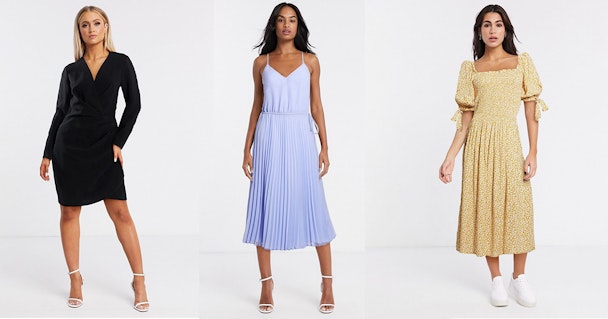Asos is using AR to promote and sell fresh products in lockdown
As lockdown continues to squeeze online fashion retailers, Asos is embracing augmented reality (AR) to help it promote and sell fresh products to housebound audience.

Clothing retailer Asos has been using digital fitting tech to stay in business during lockdown.
E-commerce clothing platforms have reported mixed results during lockdown. Although bricks and mortar competitors have been laid low by shuttered high streets, wider economic tailwinds have dampened consumers’ enthusiasm for online shopping.
According to the Office for National Statistics (ONS), clothes sales dropped 34% in March. After all, there’s not much point getting dressed up when there’s nowhere to go.
Furthermore, the lockdown has complicated the day-to-day running of sites like Boohoo, H&M and Asos, with deliveries now performed according to social distancing rules, and warehouse and admin staff furloughed and dispersed. The most basic of processes needed to keep the stream of new products rushing out to customers have also been disrupted – with photographers and models housebound, product shoots are ruled out.
Asos has found a solution to the last problem, at least. The e-commerce fashion retailer has turned to ‘digitally fitting’ models with new clothes, allowing it to continue promoting new products to its audience under lockdown.
The retailer has been simulating fittings using a tool developed by a Tel Aviv AR and AI firm, Zeekit, for up to 500 products each week using six real models. Asos had been trialling the system, called See My Fit, since last year, to provide multiple fitted images of garments across different sizes, cuts and fits, but the pandemic pushed it to accelerate the trial.
The brand told The Drum that the technology works by digitally mapping each product onto the model in a "realistic way," taking account of the size, cut and fit of each garment. It also ensures product presentation remains as "realistic and engaging" as possible while supporting social distancing by removing the need for models to enter the Asos Studios.
Shoppers looking at the products in question will see a typical-looking model shot, accompanied by a short disclaimer: “Due to social distancing, our models are WFH – so we thought we’d play around with some pretty cool tech and show you what we can do. We’ve digitally fit this product onto a model to help show how it could look. The result is a simulation, so the fit won't be exact.“
Tim Carey, senior content manager at Asos Studios, explains: “We’re fortunate enough to have been experimenting with Zeekit’s AR technology for a while, which has meant that we could scale this tech up at short notice.
“It’s a great tool for us to have at our disposal, helping us drop new items on-site each week and provide customers with realistic product images in a studio setting, while protecting the wellbeing of our models and staff.”
Yael Vizel, Zeekit’s chief executive officer adds: “We’re excited to combine our passion and expertise for high-quality digital dress up with the care for social distancing and public health.
"Digital dress up brings to life the powerful capabilities of generating beautiful fashion content with a click of a button, on any real-life model or customer - without leaving home.”
The investment in such tech follows on from Asos reporting a 25% decline in sales in April, owing to the introduction of Covid-19 protection measures. The fashion brand cautioned investors at the start of last month that consumer demand in the current environment was “by far the biggest uncertainty” the business was facing.
Though all its warehouses remain operational, they do so at lower capacity with effective social distancing measures in place.
Chief executive Nick Beighton told shareholders that Asos' focus for the second half of the year would be “balancing appropriate levels of availability, newness and choice with uncertain levels of consumer demand” across its key markets.
Ahead of the pandemic, the clothing business had already seen profits slashed after a "disappointing" 2019 in which it struggled to fight off competition from younger rivals.
AR, but make it fashion
Before it decided to scale up its use of See My Fit, Asos had experimented with various AR solutions for years, taking a ‘test, build and learn’ – previous integrations include a virtual catwalk feature in its shopping app and a sizing tool called Fit Assistant.
During lockdown, the platform has also begun relying on Asos Insiders – its influencer corps – to shoot more of its products, and using more shots of products on hangers than before.
The emergence of virtual influencer models and digital-only clothing brands such as Happy99 suggests an insight that Asos’ global audience of “fashion-loving 20-somethings” are already comfortable with the idea of engaging virtually with couture.
The proliferation of AR digital fitting tech across luxury and fast fashion platforms hasn’t yet changed consumer behaviours though; until the pandemic, brands still prioritised photos of models bringing their products to life.
And while the proportion of its range utilising See My Fit is likely to remain small for now (Asos claims the platform includes roughly 85,000 products) the scaled-up initiative may well help the platform shoulder the economic hit of lockdown.

